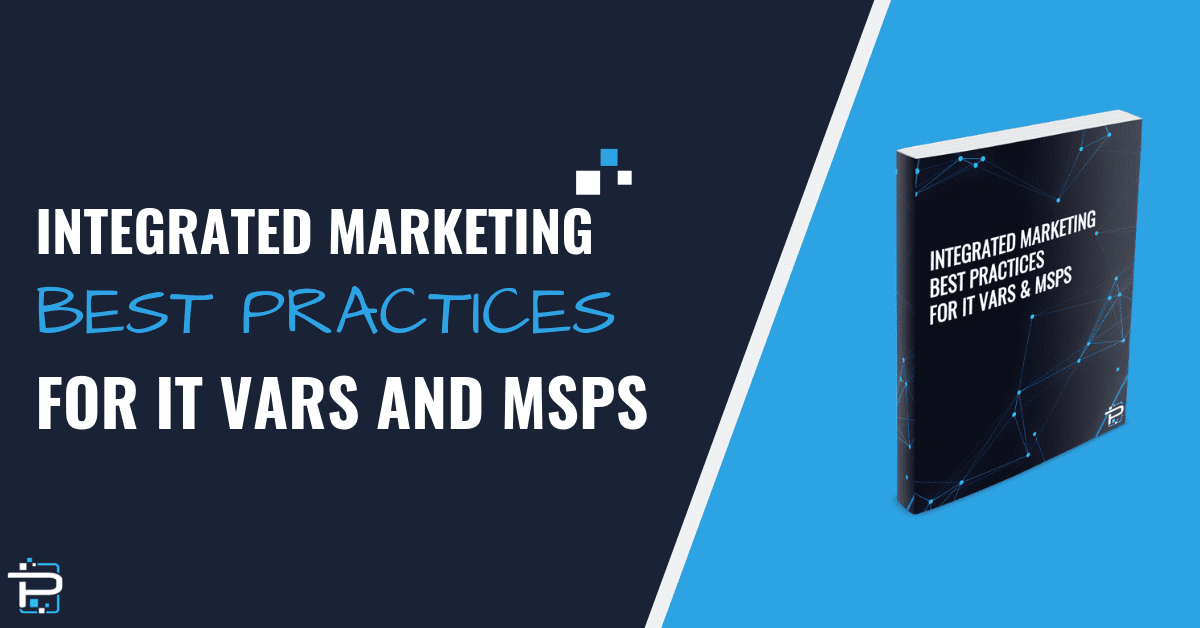The best use of Google Analytics for MSPs and VARs is to analyze traffic to your site. Having simple and clear information about web traffic gives you the insights you need to make decisions on where to concentrate your efforts in digital marketing.
We gave a brief overview of Google Analytics here, but this blog article focuses on key features of Google Analytics and how you can use them in your business to make better decisions in digital marketing.
First Things First: Set Up Web Traffic Goals

One of the fundamental aspects of getting the most out of Google Analytics is setting up Goals to see how well your website is working for high-value lead conversions. One example is a destination goal where you set up a page, or “destination,” on your site as a point of conversion.
Once it’s set up, any visitors to the page will be registered by Google Analytics as a goal conversion. An example would be when a person fills out your contact form and is directed to a “thank you” page.
Gain Insights Into Actual Traffic With Google Analytics Filters
Filters are a fundamental tool for gaining a better insight into your traffic using Google Analytics. They serve to organize the information about your web traffic in bite-sized pieces so you can get a clear view of only the most relevant information about who’s viewing your site and when.
Among the many available types of filters are two basics that include:
- Filtering out traffic from your own IP address – This gives you accurate traffic data on new and return visitors that doesn’t include a visit to your site from someone within your own company. That information could skew your data and give an inflated view of how many visitors you’ve had to your site.
- Separating mobile and desktop visitors – You can use this information to influence the type of information you’ll share on your site in the future. If you’re getting a large amount of mobile visitors, you may want to include content that’s very short and to-the-point with only a few paragraphs in one column. That way it will be easy to scan on a mobile device.
Before you choose the filters that you will apply, it’s vital to make some determinations about what and who you want to track as part of your measurement plan. The primary questions you must first ask to determine what filters to apply include defining:
- Google Analytics goals
- Online objectives and KPIs such as specific products or service interest via tracked landing page views
- Your most important marketing channels
- The different buyer personas/audiences you want to serve
- What your content structure looks like (e.g., Network products such as WAN, Monitoring, etc.)
There are many other questions you can and should answer before choosing or creating filters, but most will flow from these five. Find out more about filters here.
Track More Than Page Views With Google Analytics Events

Events in Google Analytics are instances when a user takes an action on your website. A few examples of an event include:
- downloading a pdf
- clicking on an email address
- completing an online form
The Events tool provides a more complete picture of visitor behavior on a website that can shape follow-up email campaigns, special content offers/sales tools, and specific sales outreach.
The goal is to make sure that any website changes or marketing campaigns are driven by the most solid website visitor data possible. Google analytics Events in conjunction with proper filters will help to make sure that your time and money are spent on high-value marketing approaches that have the best chance of the highest long-term returns.
Working effectively with Google Analytics is a lot like building an IT Network infrastructure. All of the different tools and components have their place and must work together holistically to deliver results.
For example, you can see how a visitor interacts with the website text such as a product or service description by gauging their scrolling behaviors and how they react to blog posts. This can provide vital data on what products and services are of the greatest interest to site visitors.
Understanding the areas of interest can help you decide which content pieces to create next, such as case studies, white papers, blogs, and explainer videos.
Define objectives and Measure Performance
By using Google Analytics tools and processes such as Audience Reports, Geography/Location Data, Service Provider Report as well as New and Returning Visitor Tracking, MSPs and VARS can zero in on high-value potential conversions. Here’s an overview of each tool:
Audience Reports

Set these up to deliver specific website visitor groups such as past visitors that have researched a specific product or service as just one example. Three important aspects to monitor are geography, service provider, and new vs. returning.
Google Analytics Geographical Site Visitor Map
Geography will show you where your visitors are located. This can shape SEO and give you the info you need to study them by other metrics, like source and goal conversions. Location data can be the driver of email campaigns that are far more targeted based on visitor numbers from a particular area (micro-targeting). It can also affect how an MSP or VAR allocates services in a region via technical support.
Service Provider Report

Network names often display as the company name rather than the network provider, which tells you immediately what customers and prospects have been on your site for potential sales outreach. Prospects picked from a network list will reveal the number of visitors and when they visited, their exit page and conversion on any site goals. Network data in Google Analytics can be used for sales optimization.
Newer and Returning Visitor Report with Segmentation
The New and Returning Visitor Report enables you to cross-reference your new user data against how they came to your site, and where they’re located. All of this information will help you understand where your customer acquisition programs are the most effective – and it’s one of the most important long-term trends you can monitor. While this has limited value alone, if it’s used with audience segmentation, it can drive targeted strategies and marketing campaigns. Note: Segmentation data can come from activities in email and social media marketing, organic search, and referrals.
Uncovering What Visitors are Seeking

Google Analytics can provide you with ways to uncover what people are looking for when they come to your site. The methods for getting this more accurate view of visitors include:
- Rank content pages by the number of page views with different pages for the services offered.
- Give each service its own web page or section of your website to make it easier to measure site engagement and see where your audience is interested.
- The “Not Provided” listing that includes the landing pages visited, as well as the filenames associated with the “Not Provided” list, can provide big clues to the interests of the website visitor. The “Not Provided” listing is Google’s way of blocking keyword searches, but these methods can deliver information that is just as valuable.
Analytics makes it easy to establish multiple goals for user behavior. You can get a total number of conversions for all of your traffic, and also segment it by any number of factors such as network, geography, or traffic source. Set up a goal for your web forms, and monitor which sources they come from. Any strong goal conversion through your listing on particular sites can be a good place to invest time and money while any place without conversions is a red flag.
While the use of Google Analytics in digital marketing for MSPs and VARs is no magic bullet to conversions, it is a vital tool that can guide a sound digital marketing strategy that gets you there. When used in conjunction with digital marketing best practices, MSPs and VARs can generate the high-value traffic that can be the focus of increased new and repeat business.
There are a lot of complexities that come with converting traffic into leads in the IT Channel. Download our Digital Marketing Game Plan for MSPs and VARs for practical guidance.
